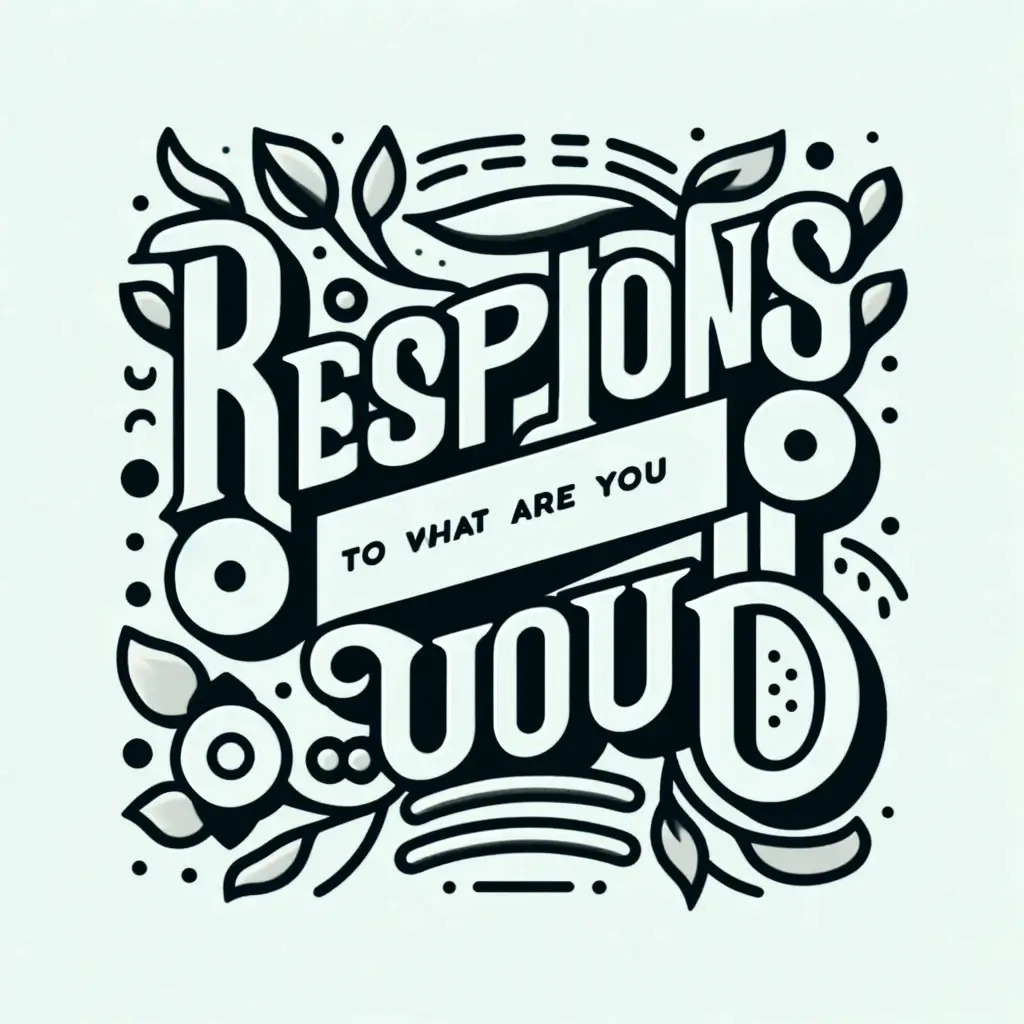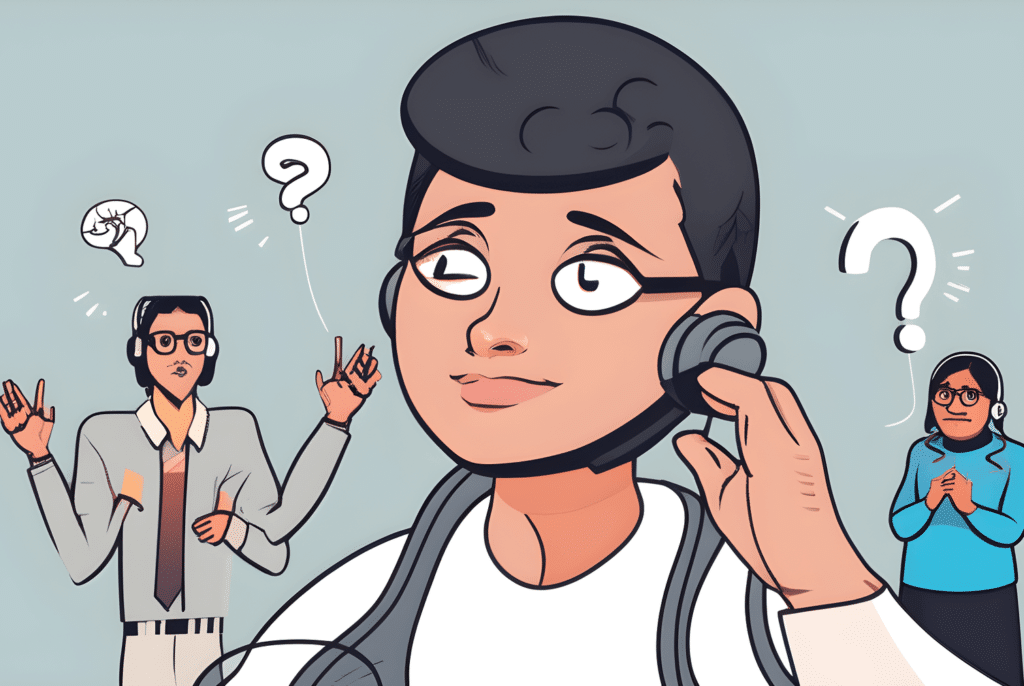
“Just working on a new project. How about you?”
Explaining what you are up to can create engaging conversations. Whether you’re working, relaxing, or pursuing a hobby, sharing your current activity helps connect with others. Briefly mentioning your task or interest keeps the conversation light and engaging. Personal details about your activity can lead to deeper discussions and stronger relationships.
It’s a simple way to share a part of your life with others and keep the interaction flowing smoothly. Always be prepared to ask them about their day as well, fostering a two-way conversation. This approach makes interactions more meaningful and enjoyable.
The Common Question
The question “What are you up to?” is a common one in social interactions. It’s a simple way to start a conversation. People ask it to understand what you are doing at the moment. Your response can vary based on the context and your current activities. This question can lead to interesting and engaging conversations.
Social Situation
In social situations, being asked “What are you up to?” can occur frequently. It’s a way for people to connect. Here are some common scenarios:
- At a party: Someone might ask to break the ice.
- In the workplace: Colleagues use it to check on each other’s tasks.
- With friends or family: It keeps the relationship strong and caring.
Your response can set the tone of the interaction. If you’re at a party, a light-hearted answer can keep the mood friendly. In the workplace, a brief update can show your productivity. With friends or family, sharing your activities can strengthen your bond.
Consider these responses based on the situation:
| Situation | Response |
|---|---|
| At a party | “Just enjoying the music, how about you?” |
| Workplace | “Working on the new project, what about you?” |
| With friends | “Catching up on some reading, and you?” |
Implications
The implications of your response to “What are you up to?” can be significant. It can reveal your mood, interests, and availability. Here are some potential implications:
- Mood: A positive response can show you’re happy and engaged.
- Interests: Sharing details about your activities can highlight your hobbies.
- Availability: Your answer can indicate if you’re free for further conversation.
For example, if you respond with “Just relaxing and watching TV,” it shows you’re in a relaxed state. If you say, “I’m busy with a project,” it indicates you’re occupied and might not have time to chat. Your response can also invite further questions. If you mention an interesting activity, the other person might want to know more.
Be mindful of the context and the person asking. Tailor your response to keep the conversation flowing naturally. Whether you’re at a social event or interacting with colleagues, your answer can shape the direction of the conversation.
Polite Responses
Everyone hears the question, “What are you up to?” often. Knowing polite responses can help you navigate social interactions smoothly. Whether you’re involved in casual activities or engaging conversations, having the right response can make a difference.
Casual Activities
When someone asks you, “What are you up to?” and you’re engaged in casual activities, a polite response can be simple and friendly. Here are a few ideas:
- “Just relaxing at home.” – This response is casual and indicates you’re taking it easy.
- “Catching up on some reading.” – This shows you’re doing something productive yet relaxing.
- “Watching a movie.” – This is a common activity and easy to relate to.
- “Going for a walk.” – This indicates you’re enjoying some fresh air and exercise.
Sometimes, adding a bit more detail can make your response more engaging:
| Activity | Response |
|---|---|
| Reading a book | “I’m reading a mystery novel. It’s really exciting!” |
| Watching TV | “I’m watching a new series on Netflix. It’s so good!” |
| Cooking | “I’m trying a new recipe for dinner.” |
These responses are polite and show that you’re engaged in enjoyable activities.
Engaging Conversations
Engaging in conversations can be more dynamic. Here are some polite responses that keep the conversation flowing:
- “I’m working on a new project at work. How about you?” – This invites the other person to share their activities.
- “Just finished a workout. What have you been up to?” – This response is friendly and shares a bit about your routine.
- “Spending time with family. How’s your day going?” – This shows you value family time and care about the other person’s day.
- “Learning something new. It’s been fun! What about you?” – This response is positive and encourages further conversation.
Engaging conversations often involve a bit more back-and-forth. Here are some examples:
| Situation | Response |
|---|---|
| Discussing hobbies | “I’m painting. It’s relaxing. Do you have any hobbies?” |
| Talking about work | “Busy with a new project. It’s challenging. What’s new with you?” |
| Chatting about daily life | “Just did some gardening. How’s your day going?” |
These responses are polite and engaging, making the conversation enjoyable for both parties.
Honest Responses
We often hear the question, “What are you up to?” Giving an honest response can create meaningful connections. Let’s dive into honest responses about work, study updates, and personal challenges.
Work Or Study Updates
Sharing updates about your work or studies can be insightful. It helps others understand your current focus and achievements. Here are some ways to honestly share your work or study updates:
- Current Projects: “I’m working on a new marketing campaign.”
- Progress Reports: “I’ve completed my research paper on climate change.”
- Learning Goals: “I’m taking an online course in data science.”
Providing specific information makes your response engaging. Below is a table showcasing some examples:
| Type | Example Response |
|---|---|
| Work | “I’m leading a team on a new project.” |
| Study | “I’m preparing for my final exams.” |
| Online Learning | “I’m enrolled in a graphic design course.” |
These honest responses make your interactions more authentic and open. People appreciate knowing what you’re genuinely involved in.
Personal Challenges
Talking about personal challenges can be tough but rewarding. It helps build trust and understanding with others. Here are some ways to share your personal challenges honestly:
- Health Issues: “I’ve been dealing with some health issues recently.”
- Emotional Struggles: “I’ve been feeling quite stressed lately.”
- Time Management: “I’m struggling to balance work and personal life.”
Being open about personal challenges can foster empathy. Below is a table with examples:
| Type | Example Response |
|---|---|
| Health | “I’m recovering from a recent illness.” |
| Stress | “I’ve been feeling overwhelmed with work.” |
| Balance | “I’m trying to find time for myself.” |
Honest responses about personal challenges can lead to supportive conversations. It’s a way to show vulnerability and connect on a deeper level.
Humorous Responses
Everyone gets asked, “What are you up to?” and the usual answers can be quite dull. Instead of the same old responses, why not add a touch of humor? Humorous responses can make conversations more fun and memorable. Let’s explore some creative ways to answer this common question.
Creative Exaggerations
One of the funniest ways to respond is by using creative exaggerations. These responses are not just amusing but also showcase your wit.
Here are some examples:
- “Oh, just planning my next heist with Ocean’s Eleven!”
- “I’m decoding ancient hieroglyphics, no big deal.”
- “Training for the next SpaceX mission to Mars!”
People love these kinds of responses because they are unexpected and funny. You can also make a list of your favorite exaggerations to use in different situations.
A table of creative exaggerations might look like this:
| Exaggeration | Situation |
|---|---|
| “Running a marathon… in my dreams!” | When asked about weekend plans |
| “Building a time machine in my garage.” | When asked about hobbies |
| “Negotiating peace treaties between my cats.” | When asked about daily tasks |
Unexpected Scenarios
Another great way to respond humorously is by creating unexpected scenarios. These are situations that are so out of the ordinary that they catch people off guard.
Some examples include:
- “I’m training my pet rock to do tricks!”
- “I’m on a secret mission for the government, shhh!”
- “Just finished negotiating a peace treaty with my garden gnomes.”
These responses are funny because they paint a picture of an absurd and unexpected scenario. They make the conversation lively and entertaining.
Here’s a list of unexpected scenarios to keep handy:
- “Just got back from a meeting with the unicorn council.”
- “I’m organizing a dance-off between my plants.”
- “I’m teaching my goldfish how to play fetch.”
Using these humorous responses will not only make people laugh but also make you the star of the conversation. So, next time someone asks, “What are you up to?” be ready with a funny, creative answer!
Avoiding The Question
We’ve all been there. Someone asks, “What are you up to?” and you’re not in the mood to share. Maybe you’re doing something personal, or you just want to avoid the topic. Avoiding the question can be tricky but effective if done right. Let’s explore some strategies for diverting the conversation and maintaining your privacy.
Redirecting The Conversation
Redirecting the conversation can be an excellent tactic. It keeps the flow going without revealing personal details. Here are some ways to do it:
- Ask a question back: Respond with something like, “Not much, how about you?” This shifts the focus back to the other person.
- Bring up a neutral topic: Say something like, “I was just thinking about that movie we talked about.” This changes the subject entirely.
- Compliment them: Compliments can be a great diversion. For example, “I love your shirt! Where did you get it?”
If you prefer a more structured approach, here’s a simple table to guide your responses:
| Situation | Response |
|---|---|
| Casual chat | “Just chilling. How’s your day?” |
| Work setting | “Busy with projects. Any updates on your end?” |
| Social event | “Catching up with friends. How about you?” |
These strategies help keep the conversation smooth and avoid awkward pauses. Being prepared with these tactics can make interactions more comfortable.
Maintaining Privacy
Maintaining privacy is crucial. Some people value their personal space and do not want to share details. Here are some effective ways to maintain your privacy:
- Be vague: Use general terms like, “Just busy with stuff,” to keep things ambiguous.
- Set boundaries: Politely say, “I’d rather not talk about it right now.”
- Use humor: Light-hearted jokes can deflect questions. Try, “If I told you, I’d have to kill you!”
Here are some specific phrases to help you maintain your privacy:
- “Just the usual, nothing special.” This keeps things non-specific.
- “I’m working on a secret project, can’t share yet!” Adds an element of mystery.
- “Handling some personal errands, nothing exciting.” Keeps the details minimal.
Privacy is important, and these methods ensure you stay comfortable in any conversation. Setting clear boundaries and using humor can make it easier to avoid unwanted questions.
Cultural Differences
People often ask, “What are you up to?” Your answer can vary based on cultural differences. Different regions have unique ways of responding to this question. Understanding these differences can help you communicate better and show respect.
Regional Customs
In different parts of the world, responses to “What are you up to?” can vary greatly. Here are some examples:
- United States: People often reply with details about their activities, like “Just working” or “Watching TV.”
- United Kingdom: Responses are often brief and may include humor, such as “Not much, just chilling.”
- Japan: People may give a polite and modest reply, like “Just doing some work” or “Nothing special.”
In some cultures, people give more detailed answers. Others prefer short and direct responses. Here is a table showing some examples:
| Country | Common Response |
|---|---|
| USA | Working on a project |
| France | Taking a break |
| India | Enjoying some family time |
Etiquette Variations
Etiquette can also play a big role in how you answer “What are you up to?” Different cultures have different norms.
In some places, it is polite to give a detailed answer. In others, a brief reply is more appropriate. Here are some etiquette variations:
- USA: Casual and friendly replies are common.
- China: People may avoid personal details and keep the conversation general.
- Germany: Direct and straightforward answers are typical.
Understanding these etiquette variations can help you communicate more effectively. It shows that you respect the cultural norms of others. This can make your conversations more pleasant and meaningful.
Social Media Impact
Responding to “What are you up to?” has evolved in the age of social media. Social media platforms shape our replies, often leading us to present curated versions of our lives. Understanding the social media impact on these responses is crucial. It influences how we see ourselves and others.
Selective Presentation
Social media encourages selective presentation. People often share only the best parts of their lives. This selective sharing creates a skewed perception of reality. Responding to “What are you up to?” on social media often involves:
- Highlighting achievements: Sharing promotions, awards, or milestones.
- Displaying social activities: Posting about vacations, parties, or events.
- Curating content: Selecting the most flattering photos and moments.
Consider the following table illustrating common types of selective presentations:
| Type of Post | Description |
|---|---|
| Vacation Photos | Images of exotic locations and fun activities |
| Career Achievements | Announcements of promotions and new jobs |
| Social Events | Pictures from parties and gatherings |
This selective presentation can lead to unrealistic expectations and feelings of inadequacy among viewers. It’s important to remember that social media often shows only a fraction of someone’s life.
Influence On Perceptions
Social media significantly influences perceptions. The responses to “What are you up to?” shape how others see us. This influence can manifest in various ways:
- Boosted self-esteem: Receiving likes and comments can make someone feel valued.
- Peer pressure: Seeing others’ posts can create pressure to keep up.
- FOMO (Fear of Missing Out): Observing others’ activities can lead to feelings of exclusion.
These influences affect mental health and well-being. Social media can create unrealistic standards. People may feel they need to live up to these standards. This can result in stress and anxiety.
Consider the following table summarizing these influences:
| Influence | Effect |
|---|---|
| Boosted Self-Esteem | Increased feelings of value and self-worth |
| Peer Pressure | Stress to match others’ lifestyles |
| FOMO | Feelings of exclusion and inadequacy |
Understanding these impacts can help people manage their social media use better and maintain a healthier perspective.
Frequently Asked Questions
What Are Common Responses To “what Are You Up To”?
Common responses include: “Just working,” “Not much,” or “Catching up on some tasks. ” These responses can be adapted based on context.
How To Respond To “what Are You Doing”?
You can say: “I’m just relaxing,” “I’m working on a project,” or “I’m running errands. ” Be specific if possible.
What Should I Say When Asked “what Are You Up To”?
Say something relevant: “I’m reading a book,” “I’m cooking dinner,” or “I’m working on a report. ” Personalize it.
What Are Polite Ways To Answer “what Are You Up To”?
Polite responses include: “Just handling some work,” “Spending time with family,” or “Catching up on chores. ” Always be courteous.
Conclusion
Crafting thoughtful responses to “What are you up to? ” Enhances conversations. It can build stronger connections and foster genuine interactions. Remember to be sincere and specific in your replies. Your engagement can make a significant impact. Use these tips to navigate social dialogues more effectively and leave a positive impression.


